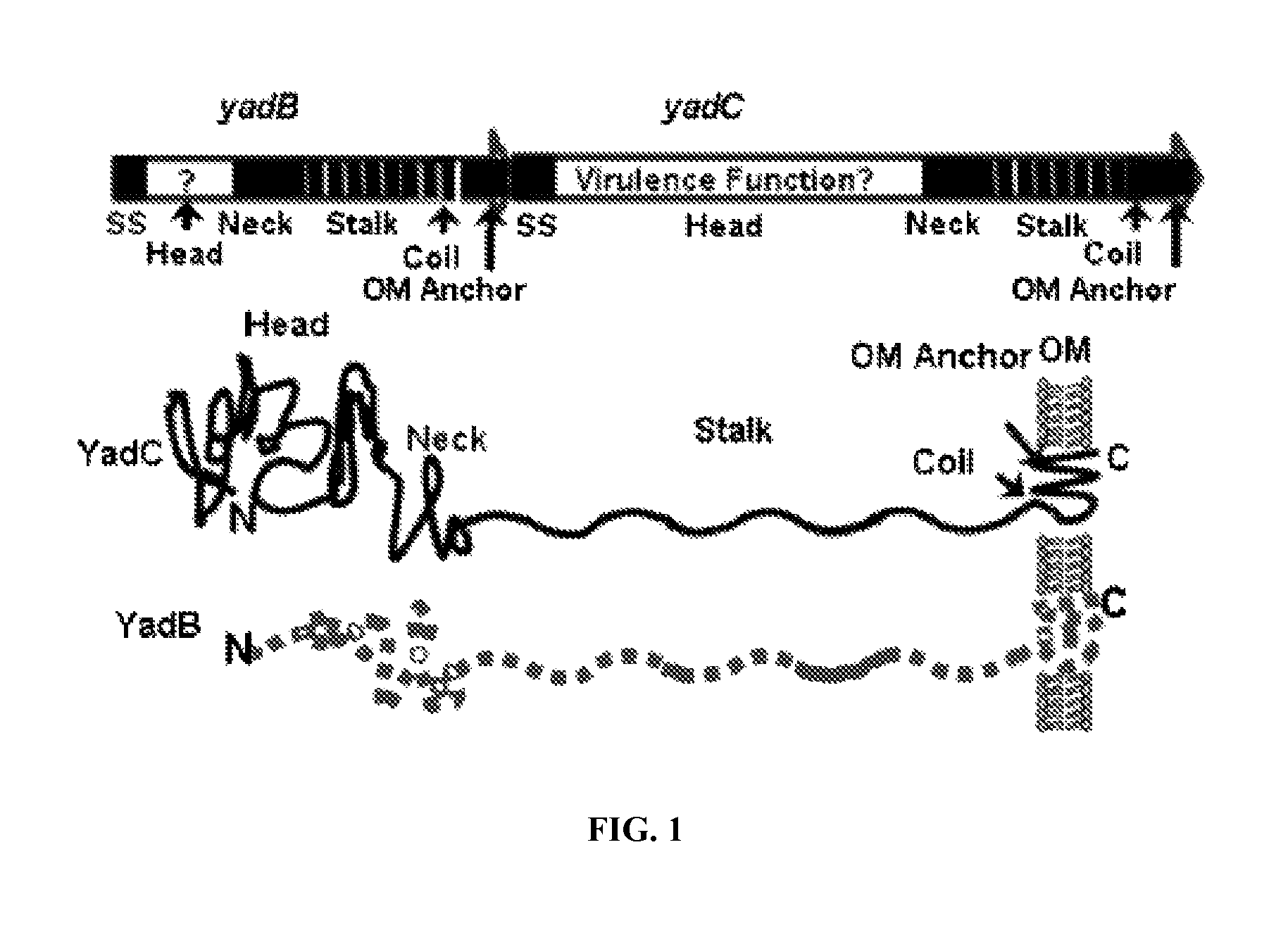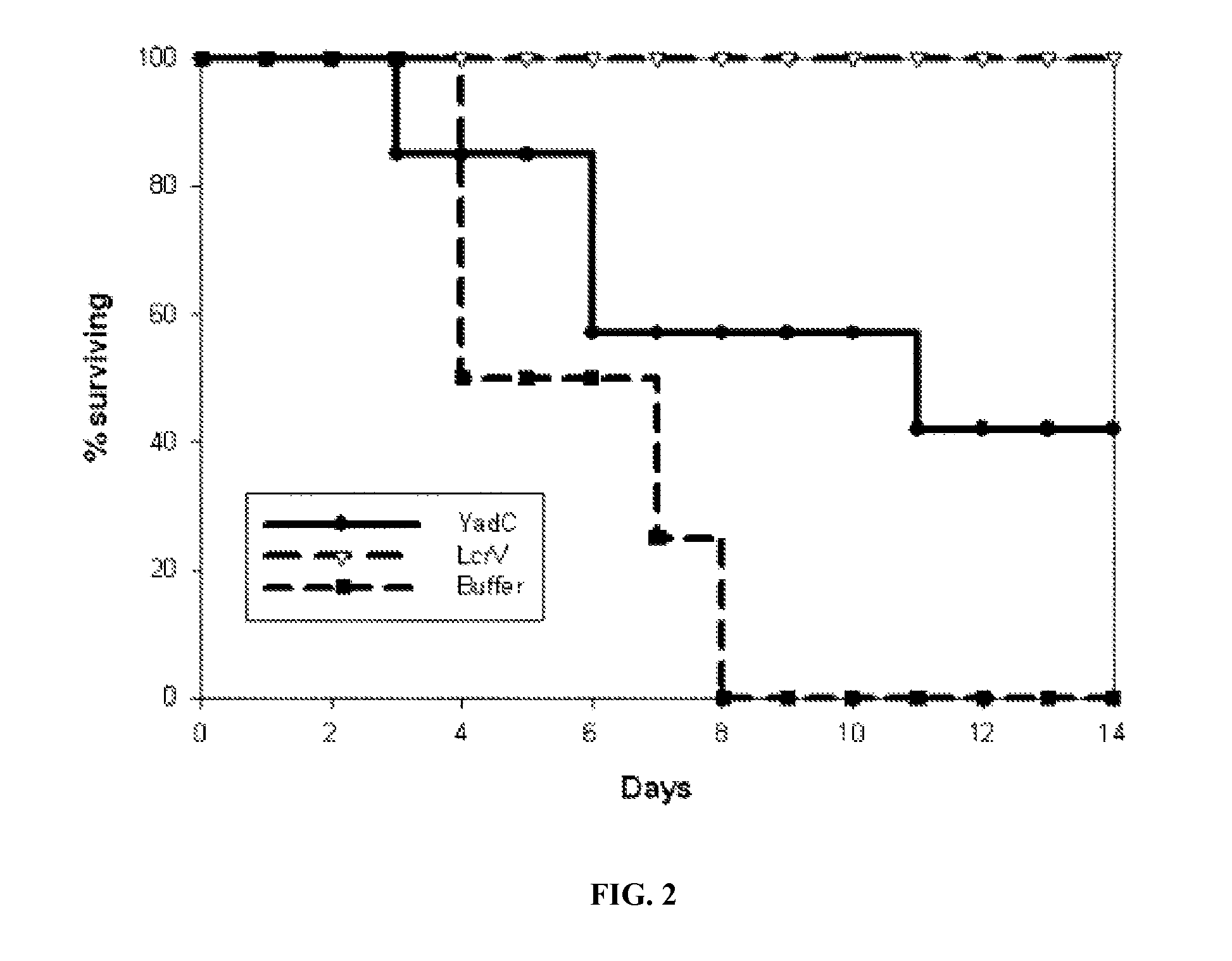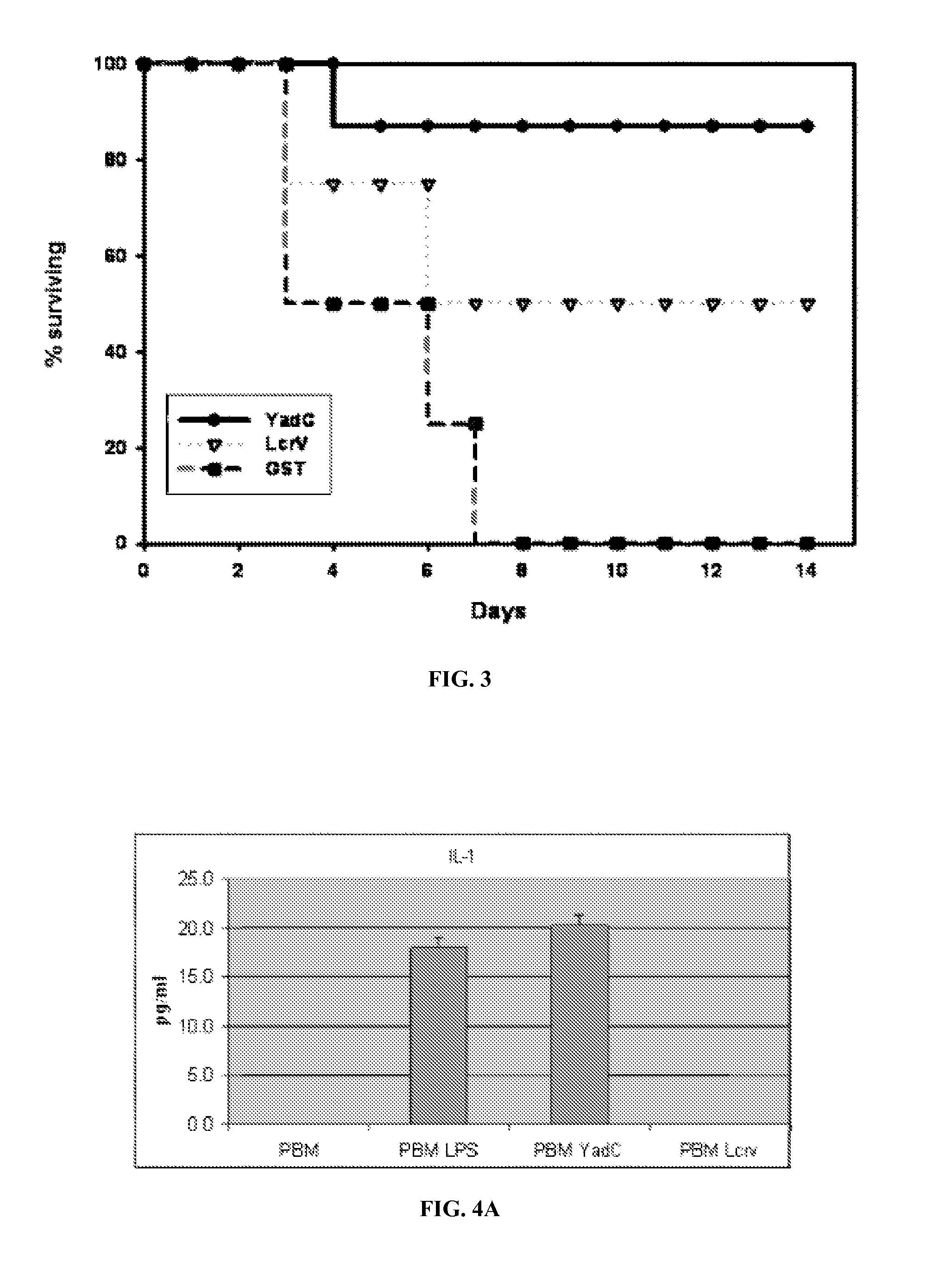Compositions and methods for treating Yersinia pestis infection
a technology applied in the field of compositions and methods for treating yersinia pestis infection, can solve the problems that known compositions containing v-antigens may not be fully protective against certain modified strains, and the compositions containing f1 antigens are not effectiv
- Summary
- Abstract
- Description
- Claims
- Application Information
AI Technical Summary
Benefits of technology
Problems solved by technology
Method used
Image
Examples
examples
[0052]Bacterial strains and plasmids. Y. pestis CO99-3015 strains were grown in Heart Infusion Broth (Difco laboratories, Detroit, Mich.) supplemented with 2.5 mM CaCl2 and 0.2% xylose (sHIB) on sHIB agar. E. coli strains were grown in Luria-Bertani broth (LB) or on LB-based agar. The bacterial strains and plasmids used in studies described herein are set forth in Table 1. Antibiotics were used at the following concentrations during genetic constructions: carbenicillin (Cb), 100 μg / ml; kanamycin, 25 μg / ml chloramphenicol, 25 μg / ml. Cb was used at 50 ug / ml for growth of Y. pestis strains containing pCD2Ap. The presence of the pigmentation locus (Perry 1997) was confirmed by the formation of red colonies on Congo Red agar (Surgalla 1969). The presence of a functional Lcr virulence plasmid was confirmed by absence of growth at 37° C. on sHIB agar containing 20 mM MgCl2 and 20 mM sodium oxalate (MgOx plates) and by assaying expression and secretion of Yops during growth in the defined m...
PUM
| Property | Measurement | Unit |
|---|---|---|
| concentrations | aaaaa | aaaaa |
| pH | aaaaa | aaaaa |
| concentration | aaaaa | aaaaa |
Abstract
Description
Claims
Application Information
 Login to View More
Login to View More - R&D
- Intellectual Property
- Life Sciences
- Materials
- Tech Scout
- Unparalleled Data Quality
- Higher Quality Content
- 60% Fewer Hallucinations
Browse by: Latest US Patents, China's latest patents, Technical Efficacy Thesaurus, Application Domain, Technology Topic, Popular Technical Reports.
© 2025 PatSnap. All rights reserved.Legal|Privacy policy|Modern Slavery Act Transparency Statement|Sitemap|About US| Contact US: help@patsnap.com



